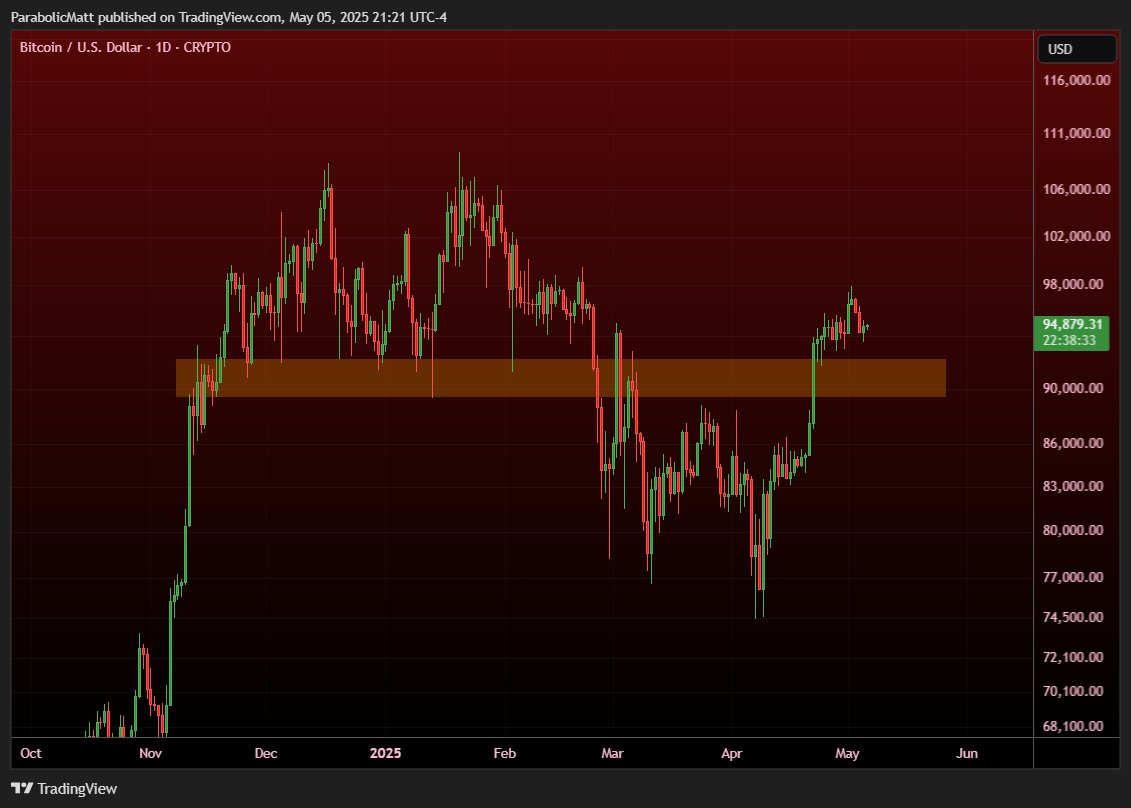| COINOTAG recommends • Exchange signup |
| 💹 Trade with pro tools |
| Fast execution, robust charts, clean risk controls. |
| 👉 Open account → |
| COINOTAG recommends • Exchange signup |
| 🚀 Smooth orders, clear control |
| Advanced order types and market depth in one view. |
| 👉 Create account → |
| COINOTAG recommends • Exchange signup |
| 📈 Clarity in volatile markets |
| Plan entries & exits, manage positions with discipline. |
| 👉 Sign up → |
| COINOTAG recommends • Exchange signup |
| ⚡ Speed, depth, reliability |
| Execute confidently when timing matters. |
| 👉 Open account → |
| COINOTAG recommends • Exchange signup |
| 🧭 A focused workflow for traders |
| Alerts, watchlists, and a repeatable process. |
| 👉 Get started → |
| COINOTAG recommends • Exchange signup |
| ✅ Data‑driven decisions |
| Focus on process—not noise. |
| 👉 Sign up → |
Bitcoin’s ongoing evolution continues to draw significant institutional interest, positioning it as a focal point for corporate treasuries.
-
Analysts project that corporate treasuries could catalyze an additional $330 billion in Bitcoin investments by 2029, providing a potential springboard for BTC prices.
-
Contrasting Bernstein’s $500K prediction for Bitcoin by 2029, Ark Invest anticipates a remarkable rise to $2.4 million by 2030, highlighting divergent market visions.
This article explores the implications of corporate interest in Bitcoin, with significant inflows set to shape its price trajectory in the coming years.
The Growing Corporate Interest in Bitcoin
As Bitcoin evolves, the anticipation surrounding its potential has captured the attention of numerous corporate treasuries. Global equity research firm Bernstein has estimated that these entities could allocate approximately $330 billion towards Bitcoin, a figure that underscores the ongoing institutional adoption of digital assets. Analysts suggest that the wave of small- to medium-sized companies looking to mirror successful strategies, such as that of MicroStrategy, could spearhead a $205 billion surge in Bitcoin acquisitions.
The allure of Bitcoin as a treasury asset lies in its potential for high returns amidst traditional economic uncertainties. Corporations perceive Bitcoin not just as a speculative investment but also as a hedge against inflation and currency devaluation. Such trends push firms to reconsider their asset allocations in favor of Bitcoin, a strategy that may redefine corporate treasury management.
| COINOTAG recommends • Professional traders group |
| 💎 Join a professional trading community |
| Work with senior traders, research‑backed setups, and risk‑first frameworks. |
| 👉 Join the group → |
| COINOTAG recommends • Professional traders group |
| 📊 Transparent performance, real process |
| Spot strategies with documented months of triple‑digit runs during strong trends; futures plans use defined R:R and sizing. |
| 👉 Get access → |
| COINOTAG recommends • Professional traders group |
| 🧭 Research → Plan → Execute |
| Daily levels, watchlists, and post‑trade reviews to build consistency. |
| 👉 Join now → |
| COINOTAG recommends • Professional traders group |
| 🛡️ Risk comes first |
| Sizing methods, invalidation rules, and R‑multiples baked into every plan. |
| 👉 Start today → |
| COINOTAG recommends • Professional traders group |
| 🧠 Learn the “why” behind each trade |
| Live breakdowns, playbooks, and framework‑first education. |
| 👉 Join the group → |
| COINOTAG recommends • Professional traders group |
| 🚀 Insider • APEX • INNER CIRCLE |
| Choose the depth you need—tools, coaching, and member rooms. |
| 👉 Explore tiers → |
The Impact of Bitcoin ETFs on Market Dynamics
The launch of Bitcoin ETFs has significantly altered the landscape for crypto investments. Bernstein notes that the introduction of these products in early 2024 has already attracted notable inflows totaling $40.7 billion, reinforcing Bitcoin’s role as both a store of value and a speculative asset. Remarkably, Bitcoin’s price leap from $35K to $74K has been partly attributed to these institutional inflows, marking a crucial turning point for BTC favorability.
The relationship between Bitcoin ETF inflows and price movements has become evident; periods of substantial inflows correspond with price surges, while outflows have historically led to price declines. The significant correlation emphasizes the importance of market dynamics influenced by institutional actions.
| COINOTAG recommends • Exchange signup |
| 📈 Clear interface, precise orders |
| Sharp entries & exits with actionable alerts. |
| 👉 Create free account → |
| COINOTAG recommends • Exchange signup |
| 🧠 Smarter tools. Better decisions. |
| Depth analytics and risk features in one view. |
| 👉 Sign up → |
| COINOTAG recommends • Exchange signup |
| 🎯 Take control of entries & exits |
| Set alerts, define stops, execute consistently. |
| 👉 Open account → |
| COINOTAG recommends • Exchange signup |
| 🛠️ From idea to execution |
| Turn setups into plans with practical order types. |
| 👉 Join now → |
| COINOTAG recommends • Exchange signup |
| 📋 Trade your plan |
| Watchlists and routing that support focus. |
| 👉 Get started → |
| COINOTAG recommends • Exchange signup |
| 📊 Precision without the noise |
| Data‑first workflows for active traders. |
| 👉 Sign up → |
Price Projections and Market Sentiment
Amid high-stakes predictions, Bernstein remains cautious, setting a cycle peak for Bitcoin at $200K by the end of 2025 and suggesting it might reach $500K by 2029. This reflects a prudent outlook within the volatile cryptocurrency environment. Interestingly, analysts anticipate a potential bearish phase in the one-year span after these peaks.
Contrarily, Ark Invest’s more bullish outlook envisions Bitcoin at $2.4 million by 2030, attributing this optimism to large-scale adoption and reduced supply dynamics. Such differing perspectives illustrate the unpredictability of Bitcoin’s long-term value and highlight the varied strategies across investment firms.
| COINOTAG recommends • Traders club |
| ⚡ Futures with discipline |
| Defined R:R, pre‑set invalidation, execution checklists. |
| 👉 Join the club → |
| COINOTAG recommends • Traders club |
| 🎯 Spot strategies that compound |
| Momentum & accumulation frameworks managed with clear risk. |
| 👉 Get access → |
| COINOTAG recommends • Traders club |
| 🏛️ APEX tier for serious traders |
| Deep dives, analyst Q&A, and accountability sprints. |
| 👉 Explore APEX → |
| COINOTAG recommends • Traders club |
| 📈 Real‑time market structure |
| Key levels, liquidity zones, and actionable context. |
| 👉 Join now → |
| COINOTAG recommends • Traders club |
| 🔔 Smart alerts, not noise |
| Context‑rich notifications tied to plans and risk—never hype. |
| 👉 Get access → |
| COINOTAG recommends • Traders club |
| 🤝 Peer review & coaching |
| Hands‑on feedback that sharpens execution and risk control. |
| 👉 Join the club → |
Short-term dynamics, particularly in light of impending Fed rate decisions, present unique challenges. Economists like Mathew Hyland note that while Bitcoin is currently displaying a bullish trend, it must maintain levels above $90K to sustain investor confidence and upward momentum.

Source: X
Conclusion
In summary, as corporate investments in Bitcoin ramp up, the digital asset stands at a pivotal crossroads. With projections indicating substantial inflows and varied price forecasts, Bitcoin remains a hotbed of activity and speculation. The market’s evolution will largely depend on sustained institutional interest and strategic positioning by corporate players. Investors are encouraged to stay informed and distinguish between prudent strategies and speculative frenzy in the crypto landscape.
| COINOTAG recommends • Exchange signup |
| 📈 Clear control for futures |
| Sizing, stops, and scenario planning tools. |
| 👉 Open futures account → |
| COINOTAG recommends • Exchange signup |
| 🧩 Structure your futures trades |
| Define entries & exits with advanced orders. |
| 👉 Sign up → |
| COINOTAG recommends • Exchange signup |
| 🛡️ Control volatility |
| Automate alerts and manage positions with discipline. |
| 👉 Get started → |
| COINOTAG recommends • Exchange signup |
| ⚙️ Execution you can rely on |
| Fast routing and meaningful depth insights. |
| 👉 Create account → |
| COINOTAG recommends • Exchange signup |
| 📒 Plan. Execute. Review. |
| Frameworks for consistent decision‑making. |
| 👉 Join now → |
| COINOTAG recommends • Exchange signup |
| 🧩 Choose clarity over complexity |
| Actionable, pro‑grade tools—no fluff. |
| 👉 Open account → |
| COINOTAG recommends • Members‑only research |
| 📌 Curated setups, clearly explained |
| Entry, invalidation, targets, and R:R defined before execution. |
| 👉 Get access → |
| COINOTAG recommends • Members‑only research |
| 🧠 Data‑led decision making |
| Technical + flow + context synthesized into actionable plans. |
| 👉 Join now → |
| COINOTAG recommends • Members‑only research |
| 🧱 Consistency over hype |
| Repeatable rules, realistic expectations, and a calmer mindset. |
| 👉 Get access → |
| COINOTAG recommends • Members‑only research |
| 🕒 Patience is an edge |
| Wait for confirmation and manage risk with checklists. |
| 👉 Join now → |
| COINOTAG recommends • Members‑only research |
| 💼 Professional mentorship |
| Guidance from seasoned traders and structured feedback loops. |
| 👉 Get access → |
| COINOTAG recommends • Members‑only research |
| 🧮 Track • Review • Improve |
| Documented PnL tracking and post‑mortems to accelerate learning. |
| 👉 Join now → |








